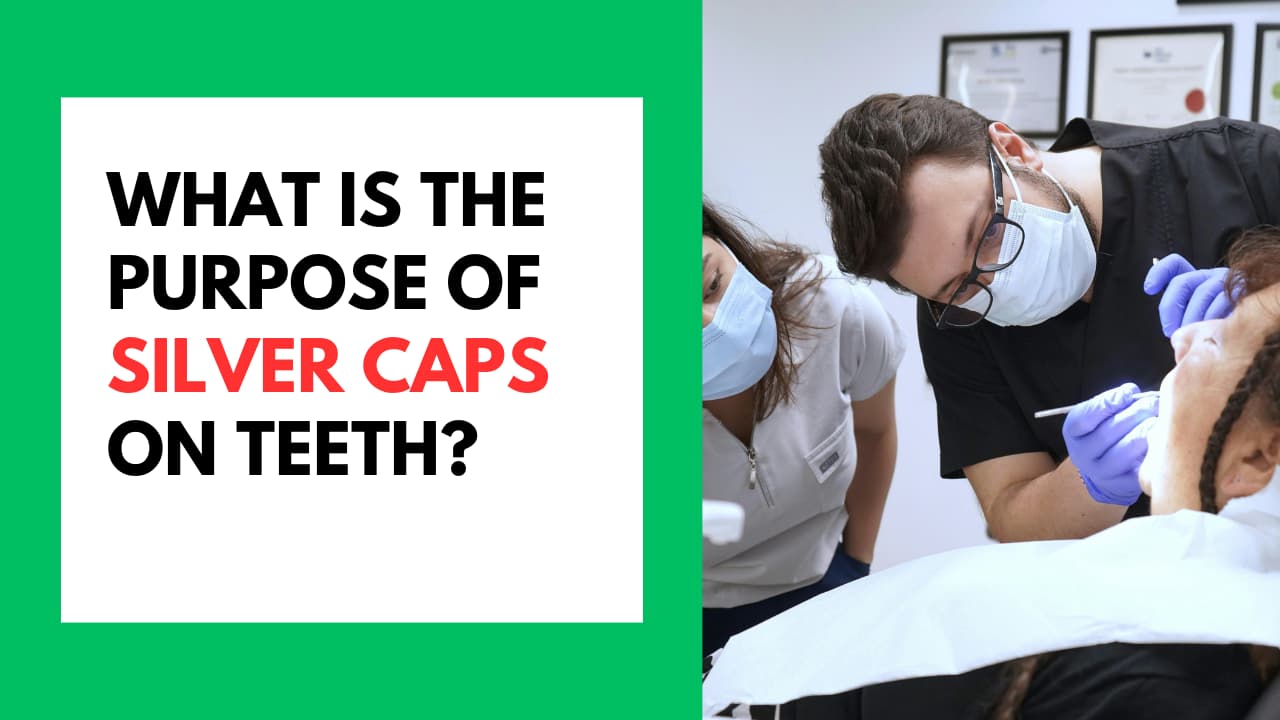Silver caps on teeth may stand out because of their shiny look, but their real purpose is to protect and strengthen damaged or decayed teeth. According to Dr. Moiz Hemani of KTX Smiles, “These strong metal crowns act like a shield, keeping teeth safe from further harm and helping them function properly for everyday chewing.”
They’re often used in children’s dentistry to protect baby molars from cavities and cracks, working like tiny armor until the teeth naturally fall out.
Expert in This Article
Dr. Moiz Hemani is a general dentist with advanced training in Invisalign®, dental implants, and orthodontics.
Primary Purposes of Silver Caps
The main purposes of silver caps, also called stainless steel crowns, are:
-
- Protection from Decay: Silver caps act as a strong cover that shields the tooth from more decay and bacteria. They are especially useful for baby teeth with large cavities or after a root canal, as they completely cover and protect the tooth.
- Restoring Function: These crowns make it possible to chew and bite normally again by strengthening the damaged tooth, even if part of it has been lost to decay.
- Preventing Infection: Silver caps seal the tooth tightly, keeping bacteria out and lowering the risk of infection spreading to nearby tissues or to the developing permanent tooth underneath.
Why Are Silver Caps Commonly Used in Pediatric Dentistry?
Baby teeth are important for chewing, speaking clearly, and guiding permanent teeth into the right position. Keeping baby teeth healthy until they naturally fall out helps prevent future orthodontic problems and supports proper mouth and jaw development.[2]
Children’s molars can decay easily because of their deep grooves and eating habits. Silver caps fully cover and protect baby molars that have large cavities or damage, something regular fillings can’t always do well. These crowns shield the tooth from more decay and stop bacteria from causing further harm.
Stainless steel crowns are very strong and less likely to break compared to fillings, which can wear down faster in children.[3]
They handle the pressure from chewing well and are also more affordable for families.
Since they cover the tooth completely and can often be placed in just one visit, they’re a convenient and effective option for young patients.
Use of Silver Caps in Adults
Silver caps, also called stainless steel crowns (SSCs), can also be used for adults in certain situations, such as:
- In repairing molars that are badly decayed or broken, where regular fillings won’t work.
- After a root canal on a molar, these crowns give strong protection and help prevent the treated tooth from cracking.
- A temporary solution for people who have medical issues, need fewer dental visits, or are looking for a more affordable option.
Benefits of Silver Caps
Silver caps, or stainless steel crowns, offer the following important benefits:
· Long-Lasting and Strong
Stainless steel crowns are very tough and last much longer than regular fillings, especially on baby teeth. They can handle strong chewing forces without breaking or wearing down easily, making them a dependable choice for both kids and adults.[5]
· Affordable Option
Compared to porcelain or ceramic crowns, stainless steel crowns cost less but still provide great strength and protection. Their lower cost makes them a practical choice for children’s dental care or for anyone needing a durable, budget-friendly treatment.[6]
· Quick and Simple to Place
“Putting on a stainless steel crown usually takes less time and requires removing less of the natural tooth compared to other crown types.” Says Dr. Hemani. This makes the process easier for patients who have trouble sitting through long dental visits and allows many crowns to be done in just one appointment.
Common Concerns Regarding Silver Caps on Teeth
Common misconceptions and concerns about silver caps (stainless steel crowns) include:
· Metallic Look and Cosmetic Concerns
One common concern with silver caps is their shiny, metallic look, which many people find less attractive than tooth-colored crowns like porcelain or zirconia. However, stainless steel crowns are usually placed on back molars, where they’re not easily seen.
For children, these crowns are often accepted in a fun way (sometimes called a “pirate tooth”) and are valued for being strong and practical. “In adults, stainless steel crowns are mostly used as temporary or functional solutions rather than for appearance.” Says Dr. Moiz Hemani
There are also pre-veneered stainless steel crowns that look more natural, but they cost more and require more tooth preparation.
· Safety of Materials and Allergy Concerns
Stainless steel crowns are made from a mix of metals such as stainless steel, nickel, and chromium. These materials are well-studied and generally safe for dental use. However, some people may have a nickel allergy, which can cause mild skin irritation or sensitivity.[7]
If you have a known metal allergy, let your dentist know so they can choose a different material or a hypoallergenic option. The chance of an allergic reaction is quite low, and the benefits of stainless steel crowns usually outweigh the small risk for both children and adults.
Wrapping Up
The key purpose of silver caps is to protect teeth that are vulnerable to damage. “Visiting your dentist will help you choose the best treatment for your needs and keep your smile healthy for years.” Advises Dr. Hemani.
- https://www.jpaget.nhs.uk/media/dabb3bp2/de-6-information-about-stainless-steel-crowns-for-your-child-trust-print.pdf
- https://www.aapd.org/globalassets/media/publications/archives/seale5-02.pdf
- https://www.ncbi.nlm.nih.gov/books/NBK574547/
- https://pubmed.ncbi.nlm.nih.gov/26481894/
- https://pubmed.ncbi.nlm.nih.gov/12412965/
- https://pmc.ncbi.nlm.nih.gov/articles/PMC12244821/
- https://dentjods.sums.ac.ir/article_41566.html

Annie Edith is an experienced journalist and content creator with a strong passion for health and wellness. She takes a unique approach to her writing, exploring the latest trends in Dental, Fitness, and mental well-being, while providing readers with informative, research-based articles.





